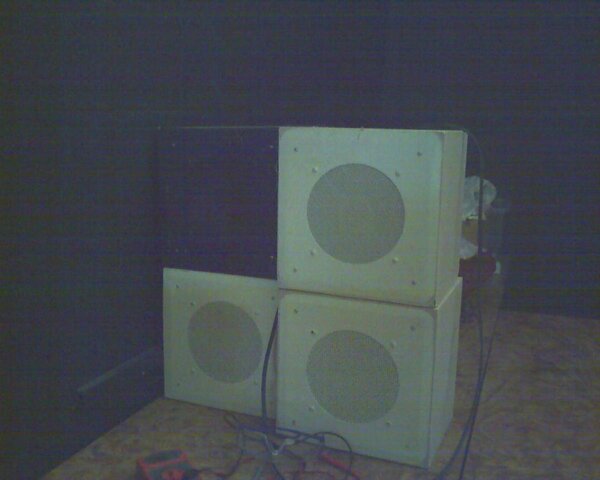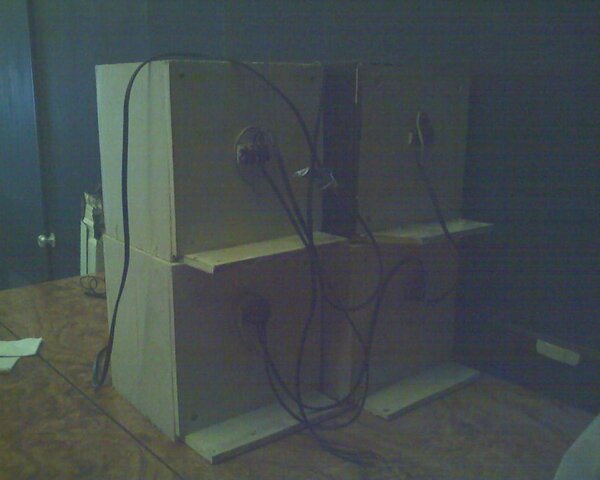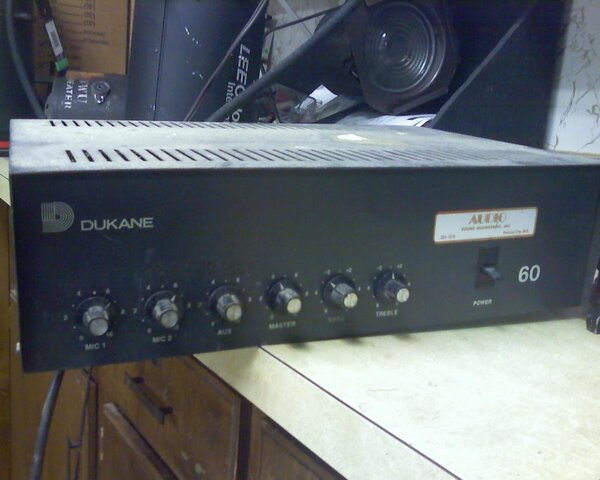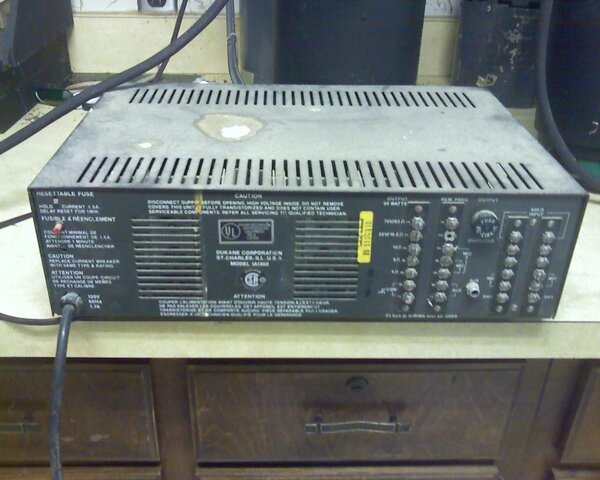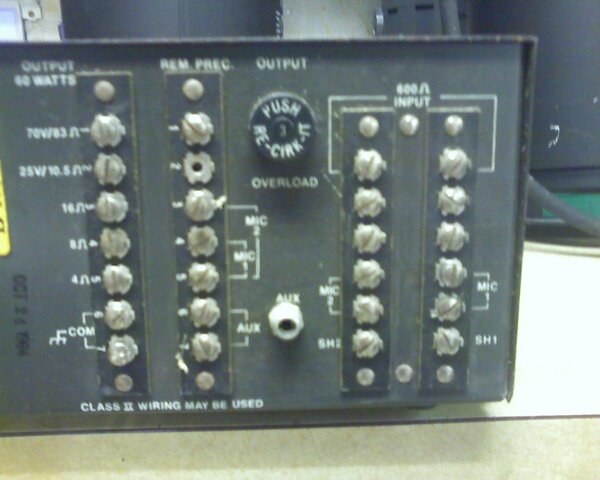Hi there...
As I'm normally used to 'plug and play' gear (clearly labeled, simple math, 'newer', etc) this is one I feel I should pitch to the forum for consultation.
I need to set up some on-stage monitors for use in a musical. My previous M.O. in this space is to run a single speaker off-SR as a fill monitor, considering our orchestra is SL upstage of the pro. The orchestra is miked and mixed and pumped out the mains as well as onstage for the performers.
Anywho, my situation is this: I'd found eight speakers stashed and collecting dust, along with an ancient (I think it has tubes--when tubes were new!) amp (no jacks, just screw terminal strips on back for output AND input) The speakers boxes are about one foot cubes, homemade, with terminal strips on the back. As they were unlabeled old gear, and as I was thinking of chaining several across the front and sides of the stage for better monitor coverage, I grabbed my ohmmeter just out of curiosity. I ohmed one out at about 89 or 90 ohms. They all were around that, between 85 and 90 roughly.
I chained four of them together in parallel and got the resistance down to about 22 ohms, hooked them to my amp (500w at 8ohm) and gradually fed signal to them. They seemed to work fine, and the amp didn't show signs of complaining.
Just how Bad an idea was this? I could probably chain six for onstage, and wire up two as ballast as need be to get the impedance down to 8ohms, but would that overtax the amp? I don't need it cooking on me mid-show (we're a poor community theatre, and the speakers/old amp were found relics from when we moved in to our current space a few years ago)
Thoughts, cautions, better ideas?
sean
As I'm normally used to 'plug and play' gear (clearly labeled, simple math, 'newer', etc) this is one I feel I should pitch to the forum for consultation.
I need to set up some on-stage monitors for use in a musical. My previous M.O. in this space is to run a single speaker off-SR as a fill monitor, considering our orchestra is SL upstage of the pro. The orchestra is miked and mixed and pumped out the mains as well as onstage for the performers.
Anywho, my situation is this: I'd found eight speakers stashed and collecting dust, along with an ancient (I think it has tubes--when tubes were new!) amp (no jacks, just screw terminal strips on back for output AND input) The speakers boxes are about one foot cubes, homemade, with terminal strips on the back. As they were unlabeled old gear, and as I was thinking of chaining several across the front and sides of the stage for better monitor coverage, I grabbed my ohmmeter just out of curiosity. I ohmed one out at about 89 or 90 ohms. They all were around that, between 85 and 90 roughly.
I chained four of them together in parallel and got the resistance down to about 22 ohms, hooked them to my amp (500w at 8ohm) and gradually fed signal to them. They seemed to work fine, and the amp didn't show signs of complaining.
Just how Bad an idea was this? I could probably chain six for onstage, and wire up two as ballast as need be to get the impedance down to 8ohms, but would that overtax the amp? I don't need it cooking on me mid-show (we're a poor community theatre, and the speakers/old amp were found relics from when we moved in to our current space a few years ago)
Thoughts, cautions, better ideas?
sean



